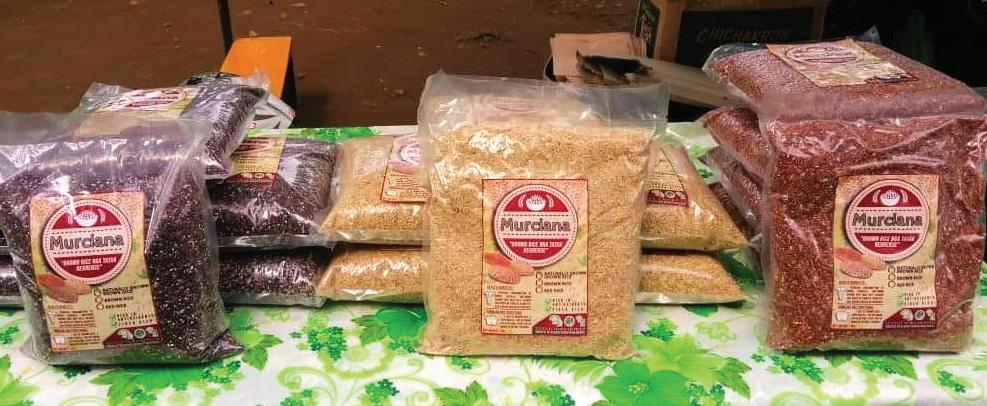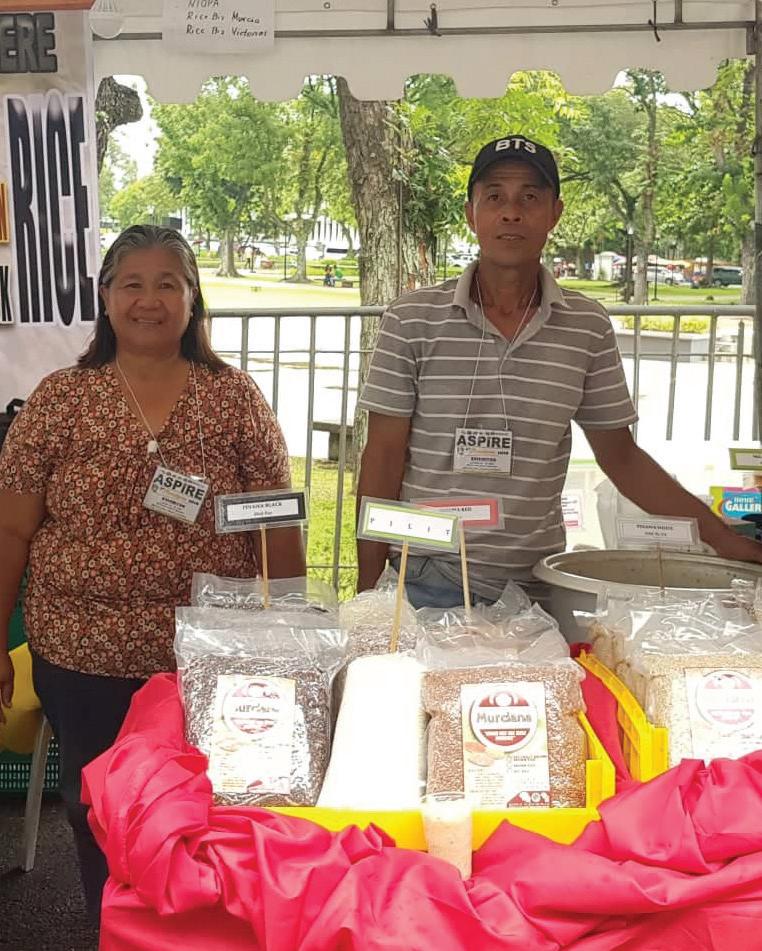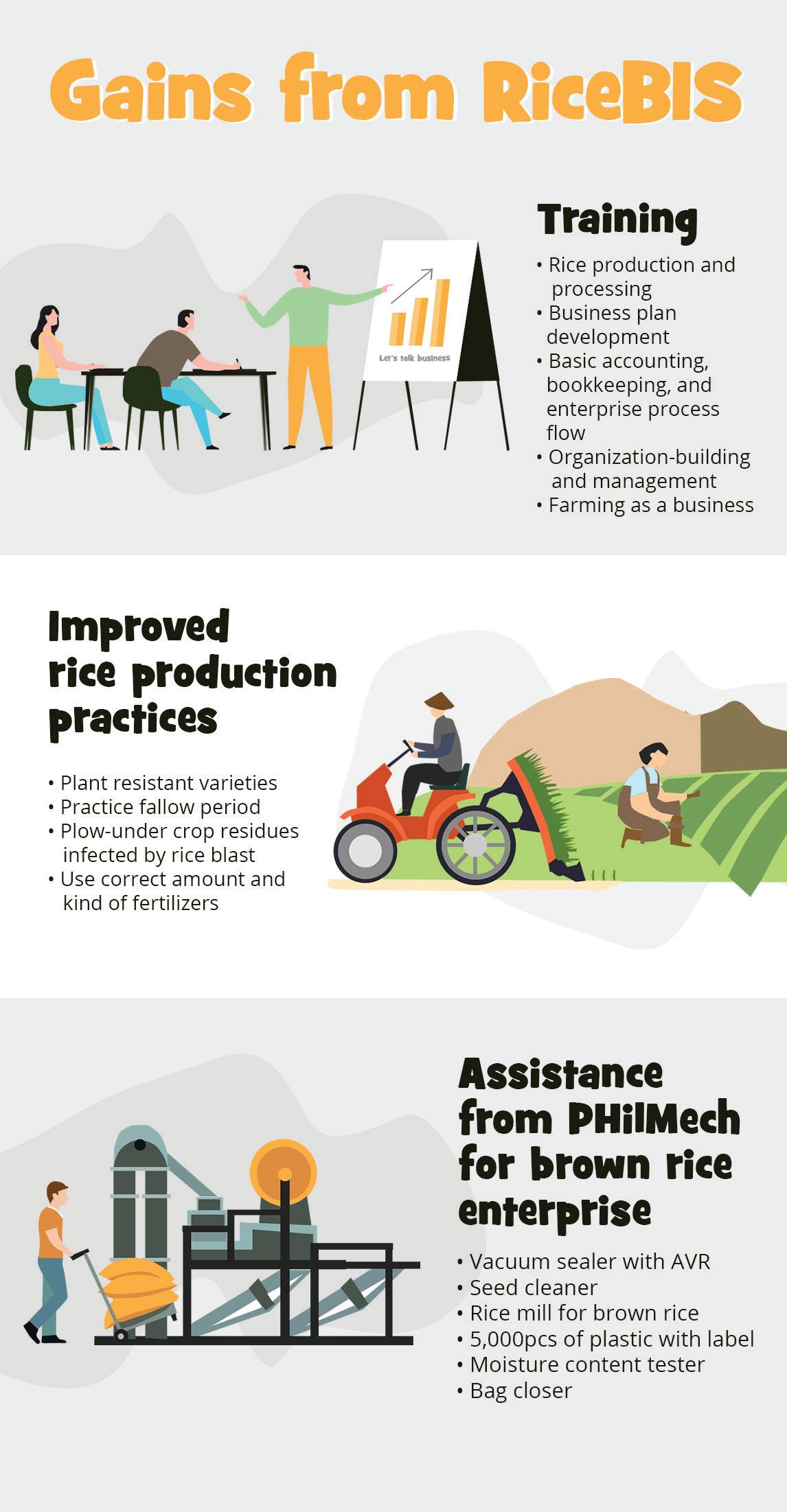
2 minute read
RICEBIS NEGROS: GOOD PRODUCT YIELDS MORE MONEY TO COOP MEMBERS
from Magazine 2021 1Q
by LearnPH
RiceBIS NEGROS
Good product yields more money to coop members
Advertisement
CHRISTINA A. FREDILES
Because of RiceBIS Negros, the group of Rabboni M. Villarosa in Cansilayan, Murcia, Negros Occidental has not only learned the health benefits of brown rice but its business potential, as well. Brown or unpolished rice has more protein, dietary fiber, B and E vitamins, and minerals compared with the glistening white rice.
Established in 2019, RiceBIS Negros Agrarian Reform Cooperative (RiceBISNARCo) sells their brown rice branded as “Murciana: Ang Brown Rice Nga Tatak Negrense” in the District-Ayala Mall in Talisay City and local government of Negros Occidental, especially in their regional hospital.
According to Anileen O. Pajarillo, RiceBIS Negros project leader, they have helped local farmers link their products with local online platforms and other business development providers aside from improving their rice production through the technologies taught to them.
“When we were starting, brown rice was unpopular in our community. We initiated its promotion by serving brown rice arroz caldo for 2 consecutive years during the celebration of the National Rice Awareness Month every November. This was in partnership with the elementary schools in Cansilayan and Murcia,” recalled Villarosa, 59, RiceBISNARCo manager.
Aside from brown rice, the Coop sells pigmented rice – specifically, their local red and black rice.
RiceBISNARCo has 44 active members. They sell their brown rice for P50-P70/kg giving them an extra income of P9.00/kg. Compared with directly selling their fresh palay harvest at P17-P23, Coop members now enjoy a stouter income from farming.
In 2020, the Coop generated P50,000 net income. “As a young cooperative, our priority is to capacitate our members to help them increase their yield; our income will follow suit,” Villarosa said.
Road less taken
On top of better rice-farming practices, Villarosa adopted the “gospel of RiceBIS” to go straight to buyers to maximize his earnings in the rice market value chain. Such is a smarter practice than selling through the traders’ agents.

To reach more buyers, RiceBISNARCo participates in trade fairs organized by the Negros Occidental provincial government.
Colliding head-on with competition, their cooperative buys palay at one peso/ kg higher than the traders’ price offer. They usually buy red and black rice fresh palay at P19/kg; P23/kg when dried. Rice experts are challenging farmers to sell dry palay for higher income and to consider planting premium varieties that are sought-after in the market.

The one peso/kg incentive isn’t all; members of the cooperative are paid patronage refund and share of stocks every end of the year. “I pocket close to P7,000 patronage refund. That’s just one of what I get from joining a cooperative,” Villarosa boasted.
With all the opportunities that have been unleashed for RiceBISNARco, Villarosa is hopeful that more farmers will join their cooperative to share the benefits that they are being pampered with.
“Let us welcome changes and appreciate the efforts of our only government, which help us [farmers] increase our yield and income,” Villarosa preached. •
INFOGRAPHICS BY: ANNA MARIE F. BAUTISTA
PhilMech - Philippine Center for Postharvest Development and Mechanization








